Weight Limitation Leads To Interesting Argument, Part Two
by ANN Correspondent Dave Slosson
In yesterday's story, we outlined
the legal specifics of the light sport aircraft rule, and delved
into the reasoning behind some of the rule's seemingly arbitrary
guidelines... including the maximum gross weight specification of
1,320 lbs.
So now comes the case of David Lowe, private pilot, A&P/IA
and multiple STC holder. David decided to build from scratch a
Cessna 120A model, full metal aircraft with standard gear, but at a
reduced weight in anticipation of the sport pilot rule. Normally, a
Cessna 120 weighs 1450 pounds gross... but David used thinner skins
on parts of the aircraft that were not structural, added stringers
where necessary for surface conformity, and eliminated the
electrical system.
Visually, you cannot tell his from a standard Cessna-built 120,
but his gross weight was originally 1232 and is now 1320 (as
amended) with an empty weight of 828. He had heard what was
proposed, and before the NPRM came out, had applied for his STC.
The Atlanta ACO held the STC application until the NPRM came out to
make sure there was no conflict between the two. Nothing in the
NPRM dealt with downrating via STC a Standard Category aircraft,
as:
From the Preamble again:
The FAA also stated that there would be little interest in
"downgrading," as a special light-sport aircraft airworthiness
certificate would have more restrictive operating
limitations.
The agency did not foresee the desire to downgrade to sport
pilot aircraft to be able to have a less-restrictive medical
policy, especially with aging pilots. Since they were picturing
these aircraft as two-person ultralights, that is understandable.
So David Lowe obtained his STC between the NPRM and the final rule,
SA02482AT. He worked on this with the intention of creating a route
for the members of the Cessna 120/140 Association to continue to
fly their machines in later years when obtaining a medical could be
a problem, but driver's licenses would be current. At Sun 'n Fun
2002, he presented his STC to Mike Gallagher, who was surprised to
see it. Mike shortly put out a memo to keep any other such STCs
from being issued, as he knew it was outside the intent of the
proposed rule. After the final rule was issued, it made David's STC
useless for inclusion to be flown as a sport pilot. He has fought
this rule since it came out in its final form, to no avail.
The Cessna 120/140 Association petitioned for reconsideration
and was denied. In the denial, the FAA stated that safety is not
necessarily enhanced because, "...the aircraft continues to have a
demonstrated capability to operate at gross weights higher than
those specified for, or appropriate to, operation by sport pilots.
Additionally, to operate the aircraft with a pilot and passenger,
sport pilots may be encouraged to carry less than adequate fuel
reserves in order to meet the lower maximum gross weight
restriction of the STC." Additionally, "The FAA agrees with the
petitioner's contention that sport pilots must also meet the same
standard to fly both a light-sport aircraft configured with a
tailwheel and any other aircraft equipped with a
tailwheel….The skills and ability of a sport pilot to
operate a tailwheel aircraft that is originally type certificated
with a maximum takeoff weight heavier than the weight limit set by
the light-sport aircraft definition is untested."
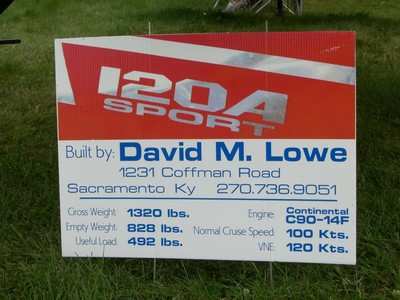
So let's look at the perceived safety aspect of light-sport
certificated Standard Category aircraft. As a measure of safety, I
turned to Falcon Insurance, who is in the aircraft risk business
and measures risk by hull losses and claims over the years. With
all other values being equal other than the aircraft type, we
compared insurance rates on many tailwheel aircraft and some other
simple, noncomplex aircraft not capable of being included in the
light-sport category strictly due to weight. The cheapest to insure
was the Cessna 150, then the Mooney Kadet with a fixed trigear,
then an Ercoupe, Cub, Cessna 140 and Luscombe 8. Put any of these
on floats and the premium doubles, yet light-sport aircraft may
have floats. The two Cessnas on this list and the Mooney are not
light-sport capable. So there is nothing here that would validate a
heavier aircraft is more difficult to fly than many Standard
Category that fall under the light-sport provisions.
Falcon representatives also indicated they would not insure
anyone in a tailwheel aircraft until they had a minimum of 25 hours
tailwheel time. (Oh, and by the way, a Flight Design CT, since
they're so much more expensive, are better than double the
insurance of any of the above mentioned aircraft. Affordable,
eh?)
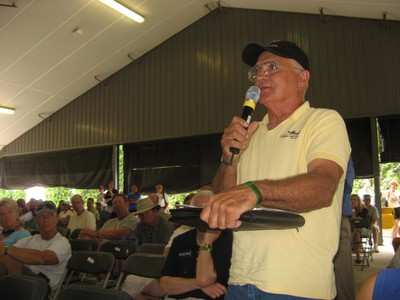
David feels he has been lied to by many FAA officials in the
last 6 years, including Marion Blakey, Mike Gallagher, and John
Hickey (Director, Aircraft Certification Service). If you were in
the Meet the Administrator forum on Thursday, July 31, you saw
David (above) come across as a very disgruntled individual. If any
of us had been treated the way he feels he has been treated for
that many years, we'd probably come across the same way. He is
passionate about his position, but unfortunately seems to have shot
himself in the foot by his timing. He tipped his hand by giving
Mike Gallagher the STC before the final rule was out.
Before we totally dismiss David Lowe and his STC, let's look at
the provision that shut him out, the part about "since its
original certification." Let's also consider the part
about, The aircraft conforms to its original configuration,
except for those alterations performed in accordance with an
applicable consensus standard and authorized by the aircraft's
manufacturer or a person acceptable to the FAA. An STC
meets the second criteria without the "consensus" portion, which is
unique to the light-sport aircraft rules. So David's revised
aircraft would be an approved aircraft to fly under light-sport
rules if it were not for the first provision about original
certification. Tom Peghiny felt the caveat is in the final rule as
the FAA didn't want people to modify previously certified aircraft
then fly them as they were before the modifications.
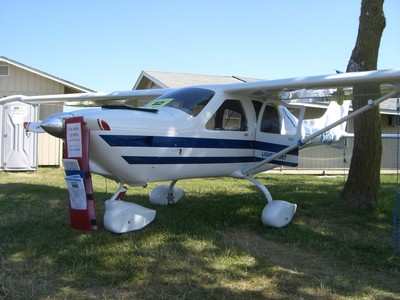
However, consider the Jabiru 230/250 light-sport aircraft. The
same airframe with the same engine is certified in Australia with
four seats at 1540 pounds gross weight. It has a Jabiru 120
horsepower 6-cylinder engine. However, to make light-sport rules,
the same composite airframe is shipped to the facility in
Shelbyville, TN and the aircraft is built here under US
certification with only two seats installed and lighter interior
materials. It has three doors and advertises itself as the largest,
most powerful light-sport aircraft. The aircraft is advertised as
having a useful load of 760 pounds, and a "max straight and level
speed of 155 miles per hour."
Sure sounds a lot like what David Lowe did, only under the guise
of certification in Australia vs. certification in the US.
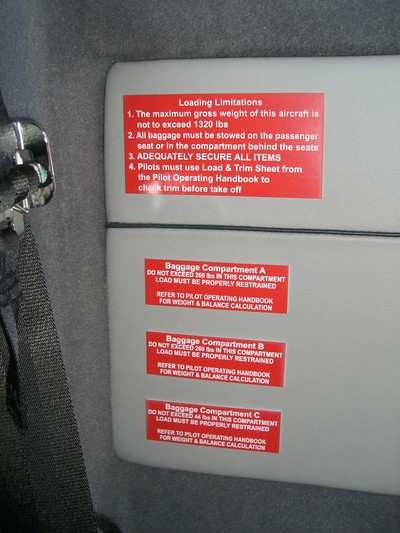
A Discussion with Pete Krotje, Chief Manager of Jabiru USA,
confirmed these specs on their handout sheet. Jabiru is not alone
in claiming higher max level flight speeds than the light-sport
rules allow, but that's not the crux of this article. The Ecoflyer
also advertises itself as the largest LSA with over 150 cubic feet
of luggage space... big enough to sleep in.
In conclusion, just considering the definition of a light-sport
aircraft and the "since its original certification" caveat, it
appears there are some unintended consequences because of the
medical certification issues tied in. The aircraft certified since
the rule was finalized are nice, simple, two-seat aircraft that any
pilot should be able to fly. However, one would have to be blind to
consider a Flight Design CT or Jabiru 250 as a two-seat ultralight.
These are fine aircraft for transportation, with several hours
range at 130 mph (or better).

Therefore... I would suggest eliminating the weight restriction
as a guideline, and leave it as simple, noncomplex, two-seat
maximum aircraft.
The NPRM showed the third highest number of comments, behind
towing (1298) and sport pilot certification (653), were maximum
weight limits and sport pilot definition (489). Obviously, it was,
and continues to be, a hot issue. There should also be a level
playing field in relation to modifying a Standard Category aircraft
to meet the light-sport rule or a foreign manufacturer modifying
their previously-certified aircraft and passing it off as a
light-sport because it was certified that way in the US. If Jabiru
can do that with their 230/250, then David Lowe's modification
should be valid for any other Cessna 120s or 140s other pilots want
to modify under his STC... right?
As a self-regulating entity, it's not being handled well or
fairly. Each aircraft should have to meet testing standards by a
testing body to ensure max speeds, max weight, and other parameters
can not be exceeded under normal operating conditions, or the
light-sport rules are worthless. There is no reason a Cessna 150,
one of the most-used trainers in the industry, is shut out of these
rules when an aircraft such as the Luscombe, a tailwheel aircraft
that is harder to fly and much more expensive to insure, is
allowed. I'd suggest a maximum interior volume instead of the
maximum weight, as that coupled with the max speeds and seats
should limit the category. Also, there must be an easier route to
follow for a pilot who lost his medical but has no problem with
holding a driver's license. This factor is probably the biggest
driver in the sport pilot/light-sport debate. Don't even get me
started on the affordability factor.

(There is currently an NPRM on sport pilot rules, viewable here,
but the weight rule is not being adjusted.)
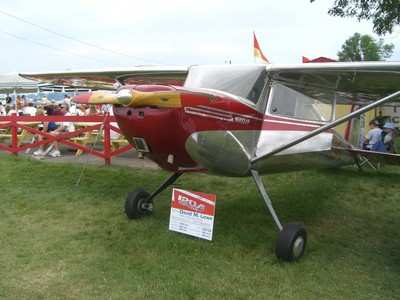
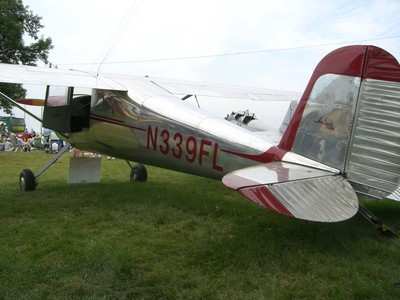
 ANN's Daily Aero-Linx (04.16.24)
ANN's Daily Aero-Linx (04.16.24) Aero-News: Quote of the Day (04.16.24)
Aero-News: Quote of the Day (04.16.24) Airborne 04.10.24: SnF24!, A50 Heritage Reveal, HeliCycle!, Montaer MC-01
Airborne 04.10.24: SnF24!, A50 Heritage Reveal, HeliCycle!, Montaer MC-01 Airborne 04.12.24: SnF24!, G100UL Is Here, Holy Micro, Plane Tags
Airborne 04.12.24: SnF24!, G100UL Is Here, Holy Micro, Plane Tags Airborne-Flight Training 04.17.24: Feds Need Controllers, Spirit Delay, Redbird
Airborne-Flight Training 04.17.24: Feds Need Controllers, Spirit Delay, Redbird










